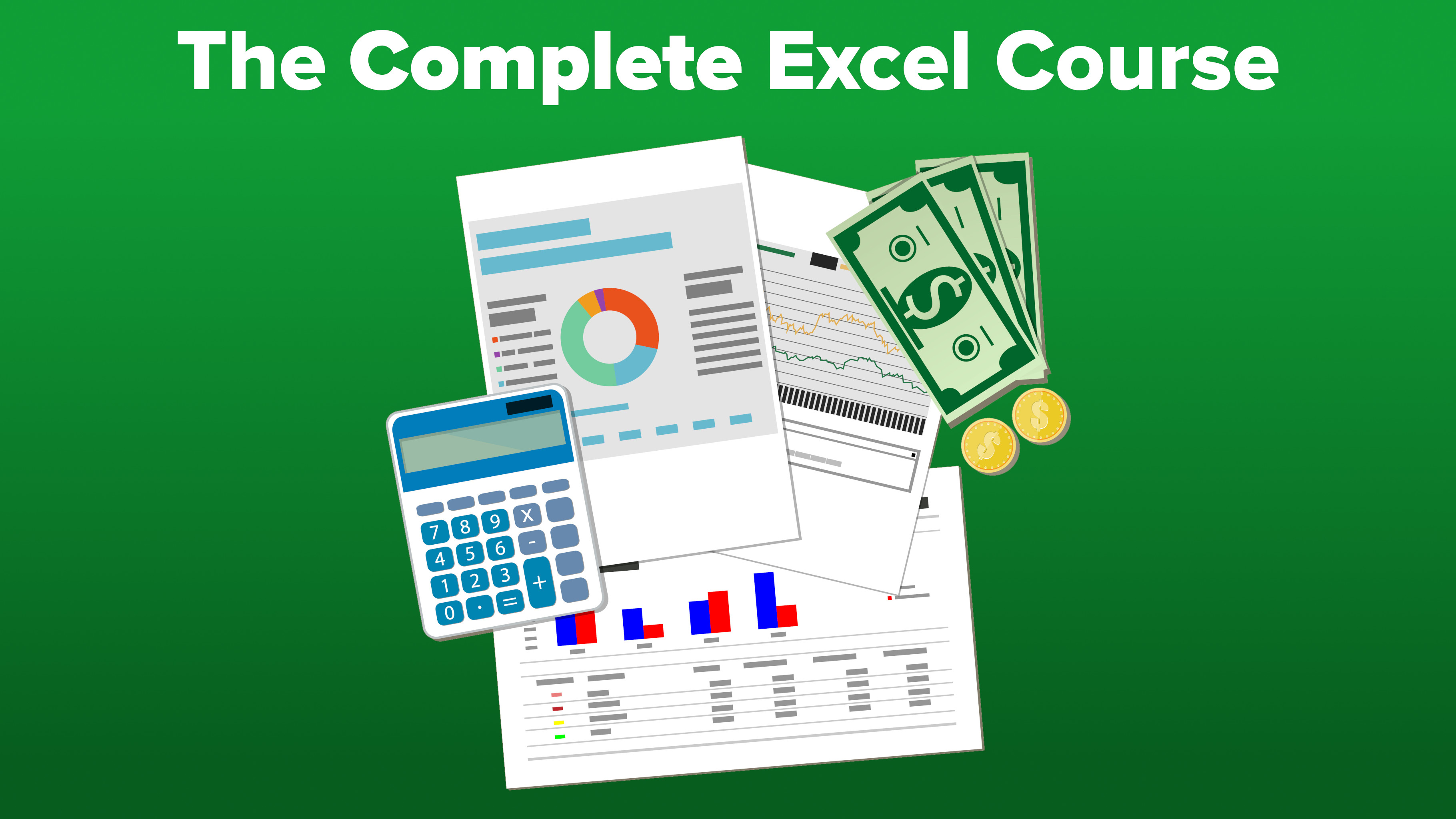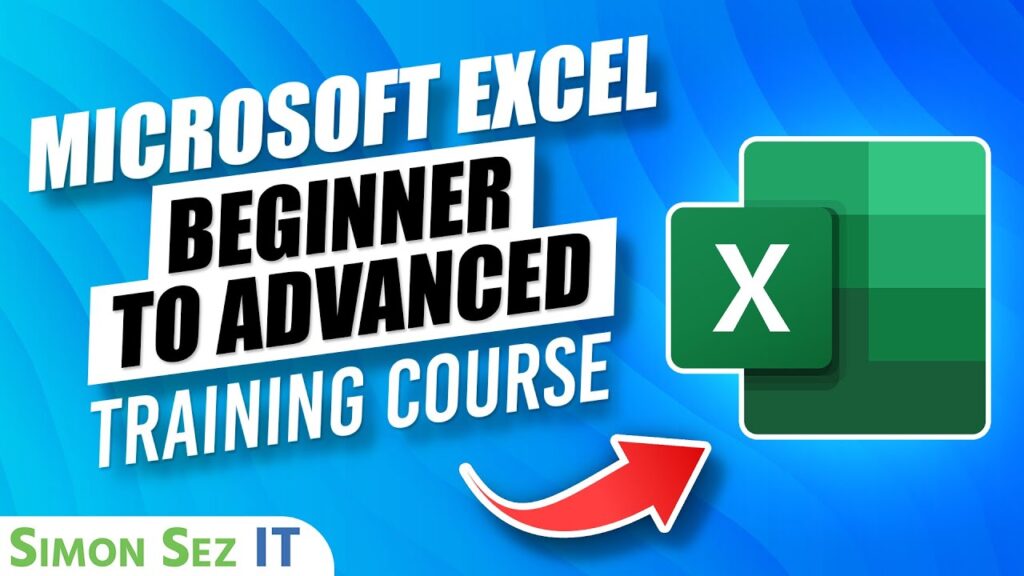Remember that sinking feeling? The one you get when someone mentions "spreadsheet" and your mind immediately conjures up a dizzying grid of numbers, formulas, and an overwhelming sense of "I have no idea what’s going on here." Yeah, that was me, not so long ago. For years, Excel was my digital Everest – a majestic, powerful tool that I admired from afar, secretly terrified of even attempting to climb it. But then, something shifted. I decided to stop admiring and start learning, and that’s when an Excel course changed everything for me.
Let me tell you a story. My story.
The Pre-Excel Predicament: Living in the Land of Manual Labor
Before my deep dive into the world of spreadsheets, my professional life was… inefficient, to say the least. I was often tasked with handling data – customer lists, project timelines, budget tracking – and my methods were rudimentary. I’d copy-paste information manually, use basic calculator functions for sums, and rely heavily on mental arithmetic (which, let’s be honest, is a recipe for error).
I’d spend hours on tasks that I knew, deep down, shouldn’t take that long. Colleagues would effortlessly pull up charts, analyze trends, and present data with a confidence that I deeply envied. My spreadsheets were flat, lifeless lists, while theirs were dynamic, insightful tools. I felt like I was constantly playing catch-up, always a step behind, and missing out on opportunities because I lacked a fundamental skill that seemed to be a cornerstone of modern work: Excel proficiency.
The Turning Point: Why I Finally Took the Plunge
The moment of truth arrived when a new project landed on my desk. It involved managing a substantial dataset, tracking multiple variables, and generating weekly reports. My usual manual methods simply wouldn’t cut it. The thought of tackling it with my existing Excel "skills" (or lack thereof) filled me with dread.
It was a stark realization: Excel wasn’t just a nice-to-have; it was a must-have. I saw my peers getting promoted, taking on more challenging roles, and I knew a big part of their edge was their ability to manipulate and understand data. I wanted that confidence. I wanted to be the person who could analyze a report, not just create a messy one.
So, I made a decision. Enough was enough. I was going to learn Excel, and I was going to do it properly.
Finding My Way: The Search for the Perfect Excel Course
The internet is a vast place, and searching for "Excel course" brought up a dizzying array of options. I was looking for something specific:
- Beginner-friendly: I needed a course that started from absolute zero, assuming I knew nothing (which was pretty accurate!).
- Practical & Hands-on: I didn’t want just theory. I wanted exercises, real-world examples, and projects I could actually work on.
- Self-paced: My schedule was unpredictable, so the flexibility to learn when I could was crucial.
- Clear explanations: No jargon-filled lectures. I needed concepts broken down into simple, digestible steps.
After sifting through reviews and course outlines, I finally settled on an online Excel course that promised to take me from "zero to hero." The testimonials spoke of instructors who made complex topics easy, and the curriculum covered everything from basic navigation to advanced functions. I took a deep breath, hit "enroll," and embarked on my journey.
My "Aha!" Moments: What I Learned (and Loved!)
The first few modules were exactly what I needed: a gentle introduction to the Excel interface, understanding rows, columns, cells, and basic data entry. It felt like learning the alphabet before writing a novel. But then, the real magic started to unfold.
1. Unlocking the Power of Formulas & Functions
This was where my jaw dropped. Before, if I wanted to sum a column of numbers, I’d either use a calculator or painfully click each cell in a basic sum function. My course taught me the simple SUM() function, and suddenly, entire columns were totaled in seconds. Then came AVERAGE(), COUNT(), MAX(), MIN() – basic building blocks that instantly boosted my efficiency.
But the real game-changer? VLOOKUP. Oh, VLOOKUP! It felt like discovering a secret superpower. The ability to pull specific data from a large table based on a unique identifier transformed my data matching tasks from hours of tedious searching to mere seconds. It was like magic, but it was just a smart function, and my instructor explained it so clearly, step-by-step, until it finally clicked.
2. Organizing & Cleaning Data Like a Pro
I used to dread messy data. Duplicates, inconsistent formatting, extra spaces – they were my arch-nemeses. The course introduced me to tools like "Remove Duplicates," "Text to Columns," and simple formatting tricks. Suddenly, I could take a chaotic export and turn it into a clean, usable dataset in minutes. This wasn’t just about efficiency; it was about accuracy and making my data trustworthy.
3. The Brilliance of Pivot Tables
If VLOOKUP was a superpower, then Pivot Tables were akin to building my own data analysis machine. Before the course, Pivot Tables were intimidating, mythical beasts. After, they became my go-to for quick insights. I learned how to drag and drop fields, summarize data in different ways, and instantly see trends and patterns. Want to know total sales by region, by product category, and by quarter? A Pivot Table could give me that answer in less than a minute. The satisfaction was immense.
4. Making Data Tell a Story with Charts & Visualization
My old charts were, well, boring. Basic bar graphs with standard colors. The course showed me how to choose the right chart type for the data, how to customize colors and labels, and how to create visually appealing dashboards. Data wasn’t just numbers anymore; it was a story waiting to be told, and I was learning how to be the storyteller. Presenting information became engaging, not just informative.
Beyond the Formulas: The Unexpected Benefits
Learning Excel wasn’t just about mastering software; it was about a profound shift in my capabilities and confidence.
- Boosted Confidence: I no longer felt inadequate when data tasks came up. I approached them with a sense of "I can figure this out," rather than dread. This spilled over into other areas of my work life.
- Increased Productivity: Tasks that used to take hours now took minutes. This freed up my time for more strategic thinking, problem-solving, and creative work. My efficiency soared.
- Career Advancement: My newfound skills didn’t go unnoticed. I was given more responsibilities, involved in projects that required data analysis, and felt more valuable to my team. It opened doors I didn’t even know existed.
- Personal Application: Beyond work, I started using Excel for personal budgeting, tracking fitness goals, and planning trips. It truly became a versatile tool in my life.
Is an Excel Course Right for You? (Spoiler: Yes!)
If any part of my "before" story resonates with you, then absolutely, unequivocally yes. An Excel course is one of the best investments you can make in your professional (and even personal) development.
- For Beginners: Don’t be intimidated. The right course will hold your hand and guide you through every step.
- For Professionals: Whether you’re in finance, marketing, HR, operations, or anything in between, Excel skills are universally valuable. They make you more efficient, more analytical, and more marketable.
- For Students: Get ahead of the curve. Learning Excel early will give you a significant advantage in internships and your first jobs.
- For Small Business Owners: Manage your finances, inventory, and customer data with clarity and control.
My Top Tips for Aspiring Excel Enthusiasts:
- Start Small: Don’t try to learn everything at once. Focus on the basics first, then build up your knowledge.
- Practice, Practice, Practice: The course provides exercises for a reason! Apply what you learn immediately. Create your own mini-projects. The muscle memory is crucial.
- Don’t Be Afraid to Make Mistakes: Everyone does. That’s how you learn. Experiment with formulas, break things, and then figure out how to fix them.
- Embrace the "Help" Function and Online Resources: Google is your friend! If you get stuck on a formula or a feature, chances are someone else has had the same question.
- Be Patient with Yourself: Learning a new skill takes time. Celebrate the small victories, like finally nailing a tricky formula.
Conclusion: Your Journey Awaits
Taking that Excel course was one of the best decisions I’ve ever made. It transformed my relationship with data, boosted my confidence, and genuinely propelled my career forward. What once looked like an insurmountable challenge became a powerful ally.
If you’re on the fence, if you’re tired of feeling overwhelmed by spreadsheets, or if you simply want to unlock new possibilities, I urge you to take the plunge. Find a good, beginner-friendly online Excel course, dedicate some time, and watch how quickly you move from a bewildered beginner to a confident, data-savvy individual. Trust me, it’s a journey well worth taking. Your future self (and your boss!) will thank you.



